CROATIA
Zagreb

Zagreb
Zagreb
Zagreb is the capital of Croatia and the province of Zagreb. The city is located in the north of the country, close to the border with Slovenia and had almost one million inhabitants in 2005. The city of Zagreb is located on the river Sava and at the foot of the Medvednica mountain range on the edge of the Pannonian plain.
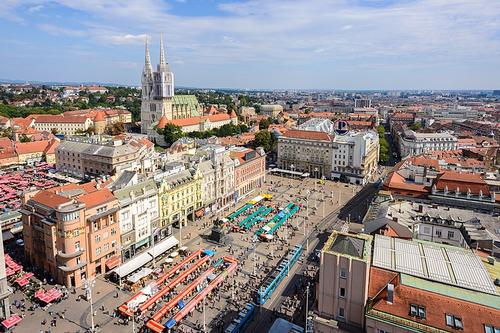 ZagrebPhoto: Nick Savchenko CC 2.0 Generic no changes made
ZagrebPhoto: Nick Savchenko CC 2.0 Generic no changes made
In administrative terms, Zagreb is a separate province with approximately 1,200,000 inhabitants and it is also the administrative center of the province. Greater Zagreb is home to about one-fifth residents of Croatia. Zagreb is a lively city, with many cozy, full terraces and cafes, many sights and shops where many a woman will be amazed. All well-known brand names have their own business in the always busy shopping streets in the center of the city.
| advertisement |
| Hotels Zagreb |
Location
Zagreb center is divided into an up and a down city. Most of the shops can be found in the down town and it is therefore very lively. The upper town is characterized by tranquility. Parliament is housed in the upper town. You will also find many galleries with the most diverse art here. If you want to avoid the hustle and bustle of the city, you can choose from various parks and gardens located both in the center and around the city center. The walk from the center to the train station also leads you past various parks and gardens, often belonging to beautiful buildings in which museums and galleries are located.
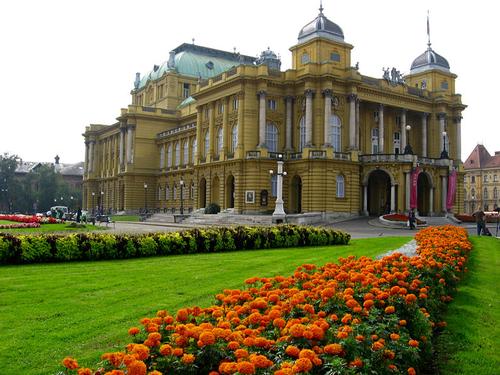 Zagreb TheaterPhoto: Kaiser87 CC 3.0 Unported no changes made
Zagreb TheaterPhoto: Kaiser87 CC 3.0 Unported no changes made
Weather
Zagreb is centrally located in the interior of Croatia. The city of Zagreb has a continental climate. Summers are hot and dry and winters are cold. It snows in Zagreb. The average winter temperature is around 1 ° C and in summer it is about 20 ° C. By the end of May it can already get very hot in Zagreb. Rain falls all year round with autumn as the wettest season and January and February as the driest months.
History
Zagreb was first mentioned in 1094. In that year, the Hungarian King Ladislaus the Saint founded a diocese on Kaptol Hill. On a neighboring hill, the bourgeois counterpart of the ecclesiastical Kaptol, Gradec, developed. In the sixteenth century both rivals developed further into one city.
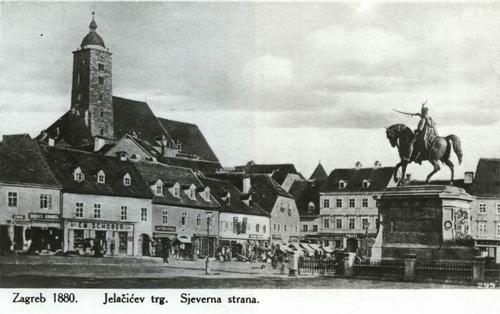 Zagreb around 1880Photo: Public Domain
Zagreb around 1880Photo: Public Domain
Under Austro-Hungarian rule, until 1918, the city was known by its German name Agram. By the way, Zagreb was located in the Hungarian part of the country and is called Zágráb in Hungarian. Never many Hungarians have lived in Zagreb. Today, more than 90% of the inhabitants are Croatians and the Serbs are the largest minority.
Initially, Zagreb was only on the left bank of the Sava. The urban district on the south side, Novi Zagreb, only developed in the mid-twentieth century. On the south side is Franjo Tudjman, the international airport of Zagreb. After Croatia seceded from Yugoslavia in 1991, Zagreb was declared the capital of the new nation. Since then, the city has pursued economic development through commercial transport and industrial production, as well as tourism.
Sights
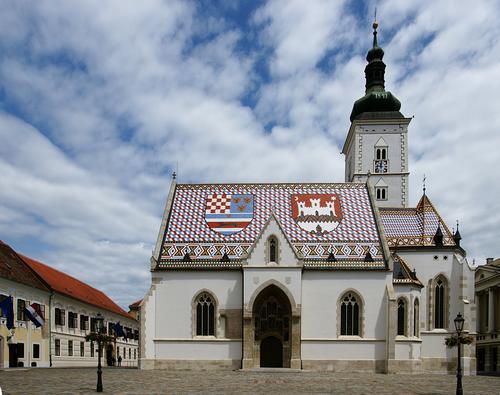 Zagreb Upper TownPhoto: Alexander Klink CC 3.0 Unported no changes made
Zagreb Upper TownPhoto: Alexander Klink CC 3.0 Unported no changes made
The Upper Town (Gradec) is the medieval part of the city of Zagreb. It is the most interesting part of the city: everywhere you can find traces of Zagreb's turbulent past. You enter the Old City through a stone gate, the only one of the medieval gates that has been preserved. There is a shrine for the Virgin Mary in the city gate. St. Mark's Square is the center of the Upper Town and is dominated by the beautiful Church of St. Mark from the 13th century. The most striking element of this church is the roof with colored tiles.
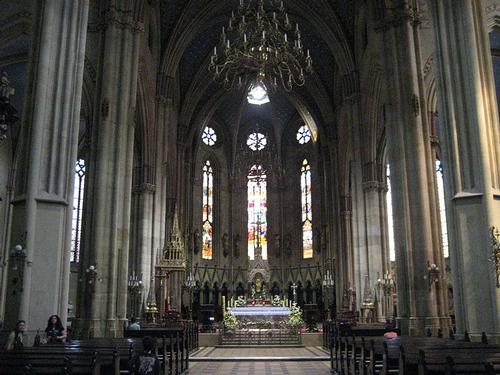 Zagreb Cathedral InteriorPhoto: Modzzak CC 3.0 Unported no changes made
Zagreb Cathedral InteriorPhoto: Modzzak CC 3.0 Unported no changes made
In 1094, the inhabitants of Zagreb started building a cathedral in Romanesque-Gothic style. Construction was completed in 1217. In 1242 the Turks destroyed the church, but in 1263 the cathedral was renovated again, this time in Gothic style. Walls and towers were added in the 16th century and a massive Renaissance-style tower was added to the cathedral in the 17th century. An earthquake in 1880 caused a lot of damage and major renovations were necessary. The cathedral was renovated in the Neo-Gothic style and the towers, which are now one of the striking features of the impressive building, were added.
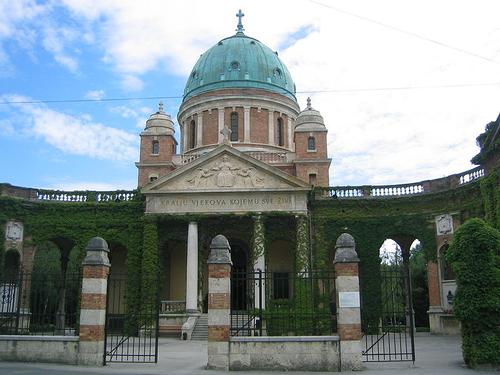 Zagreb Miregoj CemetryPhoto: Budgiekiller CC 3.0 no changes made
Zagreb Miregoj CemetryPhoto: Budgiekiller CC 3.0 no changes made
One of the most impressive cemeteries in the world is located in Zagreb, just north of the center. The cemetery was opened in 1876 and consists of a beautiful church with mortuary. One of Croatia's heroes, basketball player Drezan Petrovic, is buried there. There is a nice view of the city from the Medvednica fortress on a hill.
Zagreb has many museums about the history and culture of Zagreb and Croatia, as well as collections from Europe and the world. Together, the museums and galleries contain some 3.6 million objects, not including private and church collections. Some of the best known museums are:
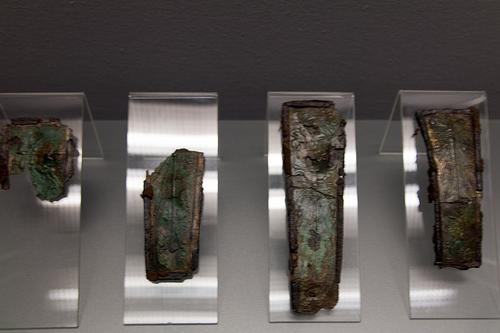 Archeologial Museum in ZagrebPhoto: Daniel Villafruela CC 3.0 Unported no changes made
Archeologial Museum in ZagrebPhoto: Daniel Villafruela CC 3.0 Unported no changes made
The Archaeological Museum (Nikola Šubic Zrinski Square 19) has more than 400,000 objects, not all of which are on display. These objects relate to the history of the Croats in Croatia. There are also some world collections, such as the Egyptian collection, with the Liber Linteus and the oldest Etruscan texts in the world (Liber Linteus Zagrabiensis) and a coin collection. Part of the museum is dedicated to Roman stone monuments.
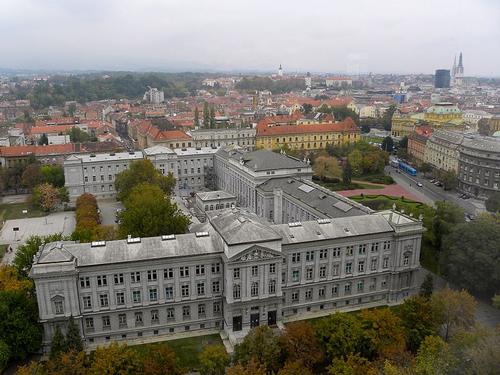 Mimara Museum ZagrebPhoto: FasonParis CC 2.0 Generic no changes made
Mimara Museum ZagrebPhoto: FasonParis CC 2.0 Generic no changes made
Another well-attended museum is the Mimara Museum (Roosevelt Square 5). Of a total of 3,700 different works of art, more than 1,500 are on permanent display, from prehistoric times to the 20th century. The permanent display shows works of art by Italians such as Lorenzetti, Raffaello, Giorgione, Veronese, Caravaggio and Canaletto. Furthermore, some 110 paintings by Dutch and Flemish painters: Rembrandt, Van Goyen, Ruisdael, Van der Weyden, Bosch, Rubens and Van Dyck. More than 30 masterpieces by Spanish artists: Velasquez, Murillo and Goya. About 20 paintings by German artists: Holbein, Liebermann, Leibl. About 30 paintings by English painters: Thomas Gainsborough, Turner, Bonington. There are also more than 120 paintings by French painters such as Georges de la Tour, François Boucher, Chardin, Delacroix, Corot, Manet, Renoir and Degas.
The Croatian Museum of Natural Sciences (Demetrova 1) preserves the world's largest collection of Neanderthals (the Krapina man) found in the region. There are also stone weapons and prehistoric objects.
The Technical Museum (Savska 18) has the oldest working machine in the region (from 1830). There are also some working Nikola Tesla inventions, old planes and a real mine.
Tips Zagreb
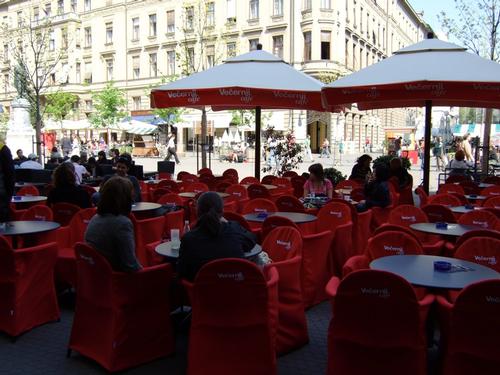 Zagreb Café TerracesPhoto: Living in Monrovia CC 2.0 Generic no changes made
Zagreb Café TerracesPhoto: Living in Monrovia CC 2.0 Generic no changes made
Zagreb has a thriving café life and there are numerous terraces in the city center and far beyond. You can also enjoy an excellent meal there. In addition to the many Croatian restaurants, there are also numerous international restaurants. You must have eaten a Croatian speciality "Strukli" at least once.
Useful links Zagreb
BBC Country ProfilesWorld Fact Book Explore all Countries
How to call
Last updated June 2025
Copyright: Team - The World of Info